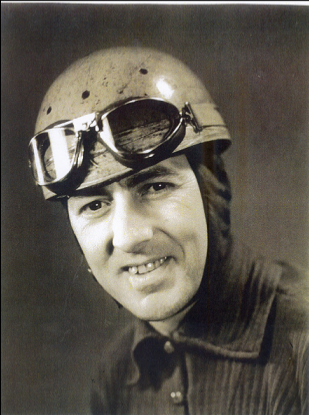War clouds had been gathering for several years, but the United States of America had technically remained on the sidelines until near the end of 1941, although it had provided aid to Britain and the Soviet Union. After the Japanese attack on Pearl Harbor, December 7, 1941, Congress declared war on Japan. Nazi Germany, honoring its pact with Japan, then declared war on the U.S.. The country responded, and suddenly the economy had shifted from a social-economy one to wartime one.
All automobile racing was put on hold, as the economy shifted.
Barringer did volunteer for the Armed Services, but was turned down because of a lung condition. While he did not serve overseas, George Barringer did his duty at home by going to work for a defense plant in Indianapolis.
NOTE: George Barringer went to work for the Government at Naval Avionics in Indianapolis. The Naval Avionics facilty was a top-secret Agency, formed in 1939, when the war in Europe broke out, the United States Bureau of Ordnance determined that five in-shore facilities should be built for the manufacture of naval ordnance equipment. Indianapolis was selected because it was centrally located, it was a railroad center, and was far enough inland that it could not easily be bombed by enemy aircraft.
Few people took notice when an isolated tract of land bounded on the north by 21st Street and south by 16th Street and west by Arlington Ave and east close to Road 100 or Shadeland Avenue as it was starting to be called, was being cleared, drained, and graded in what seemed to be a massive construction project. It came to 163 acres.
Not that many folks resided in the area at the time and there was a great deal of undeveloped farmland on that area on the east side. There was some speculation as to what was being constructed. A prisoner of war or Japanese American interment camp? A military induction center or ammunition depot? People working on the project were ordered to keep a tight lip.
The secret was that the Norden Bombsight was being developed and constructed for naval use at the NOP. By 1942 the bomb sight had been automated and advanced to the point where American Army Air Corp and Navy bombers could drop bombs with greater accuracy and at a much higher altitude than ever before. This increased the range of the American bombers, helped them better dodge enemy anti-aircraft fire, and more accurately take out the designated targets. When the Enola Gay flew over Hiroshima and dropped the A-Bomb, the bombardier used a Norden Bombsight.
By 1944, the Indianapolis Naval Ordnance plant was the leading producer of the Norden Bombsights. While many Indianapolis residents had become aware of the plant's existence, because the project was so top secret, very, very few were aware of what was being made there. Even after the war was over, much of the NOP production was hush-hush. It was a number of years before the general public was made aware of what had been happening at the facility during the war. The Indianapolis plant received the Navy's "E" flag for excellence in service in 1943, 1944, and 1945.







